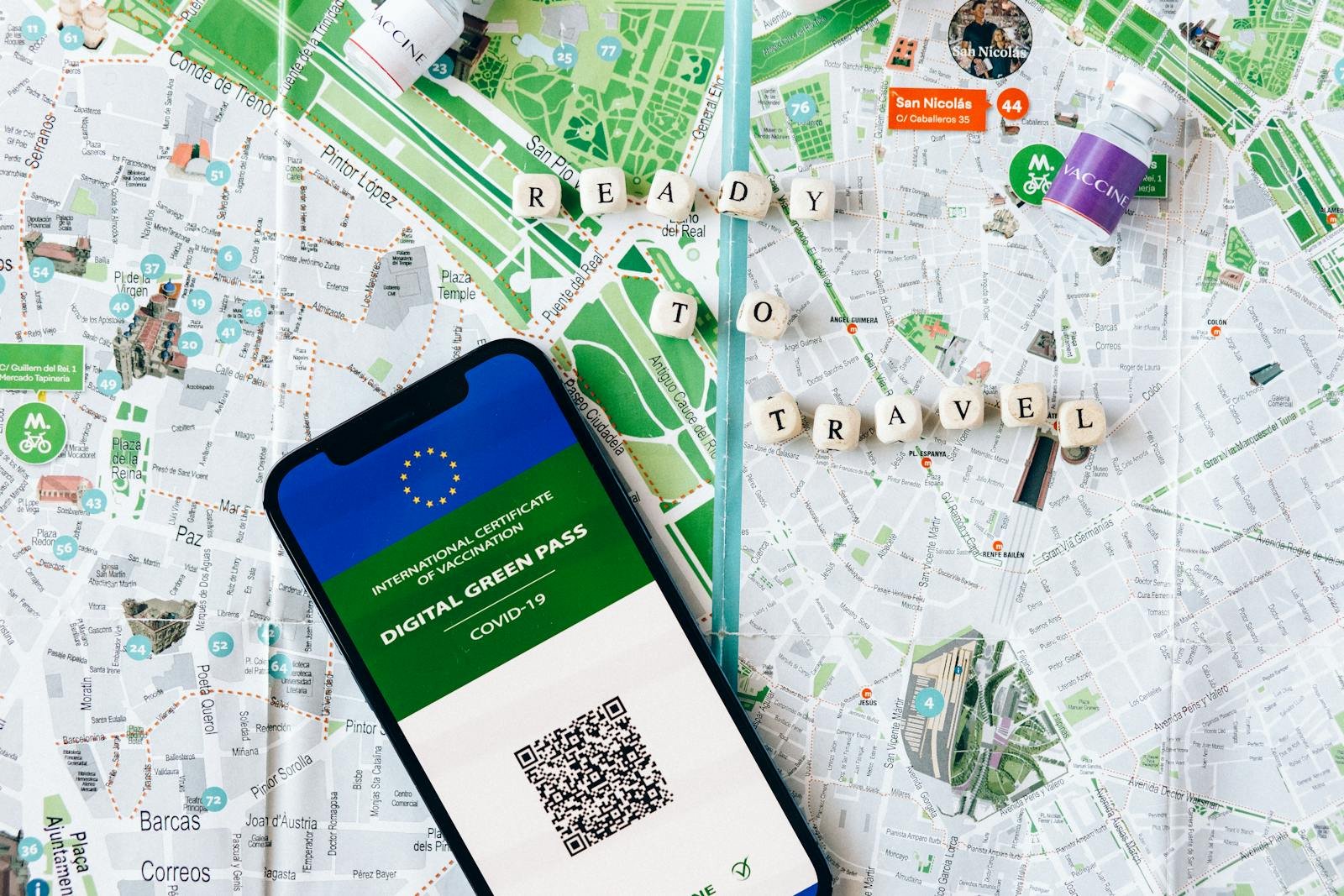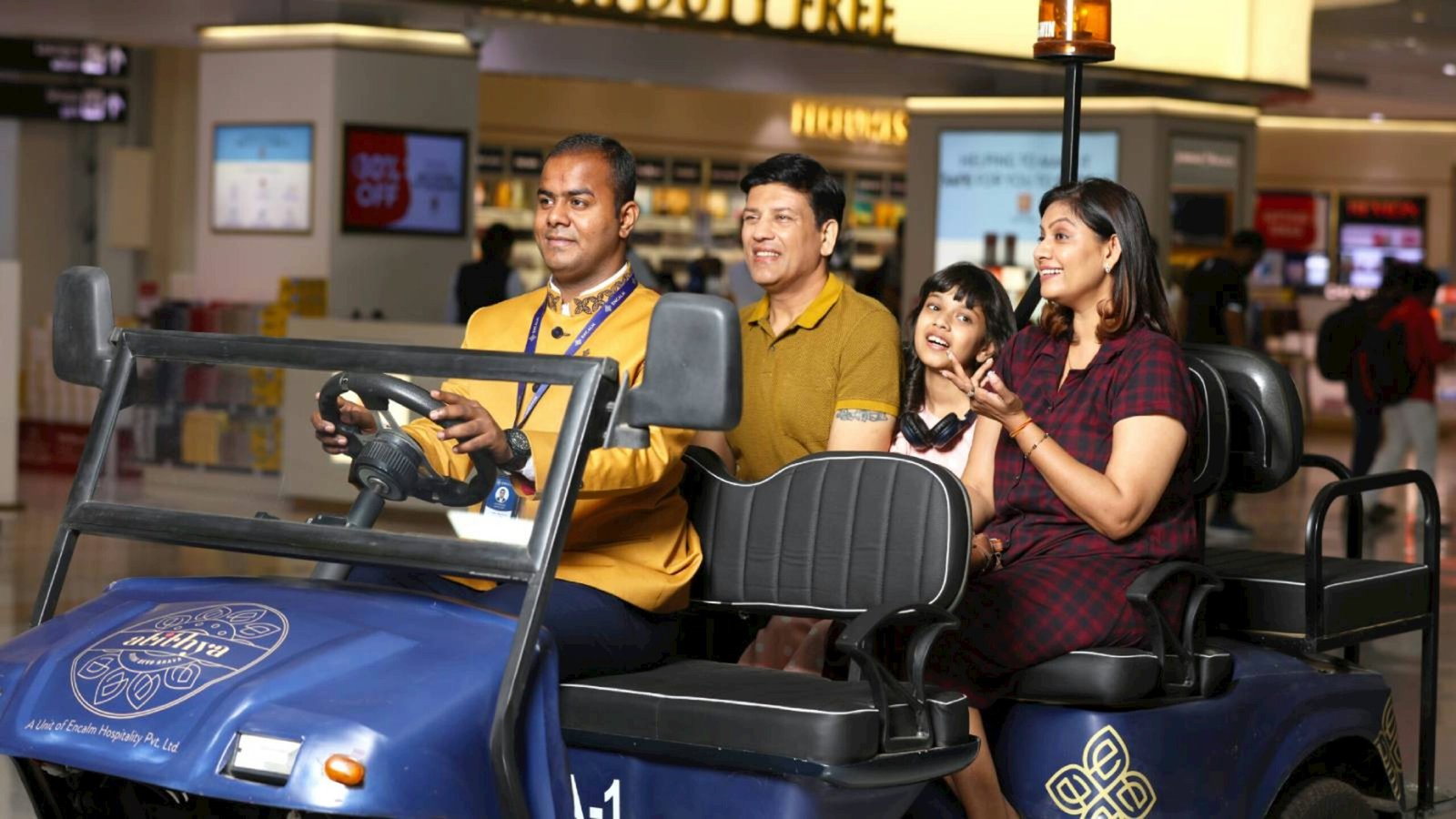
Understanding the Risks of Solo Travel
Solo travel offers a unique opportunity for self-discovery and adventure, yet it is essential to recognize the inherent risks involved. One of the more pressing concerns for solo travelers is theft, which can occur in crowded areas, public transportation, or even within accommodations. Pickpockets often target individuals who appear distracted or preoccupied with their surroundings. Therefore, maintaining situational awareness is crucial. Keeping valuables hidden and utilizing anti-theft equipment, such as secured bags and zippers, can significantly reduce the risk of theft.
Additionally, scams targeting tourists are prevalent in many parts of the world. These can range from seemingly harmless offers for assistance to complex schemes designed to extract money from unsuspecting travelers. Awareness is the first line of defense; researching common scams in the destination country can equip solo travelers to recognize and avoid them. Engaging with local communities and establishing a network of trusted contacts can also provide invaluable safety tips and support.
Personal safety concerns are another pivotal aspect to consider. Traveling alone may expose individuals to situations where their safety could be compromised, whether at nighttime or in unfamiliar environments. It is advisable for solo travelers to remain vigilant, avoid risky areas, and establish a plan for emergencies, such as knowing the locations of the nearest embassies or local police stations. Sharing travel itineraries with trusted friends or family members can create an additional layer of security.
While it is crucial to remain cautious, embracing the spirit of adventure is equally important. Balancing awareness of potential risks with a willingness to explore and engage with the world can lead to enriching experiences. Ultimately, by understanding and acknowledging these risks, solo travelers can empower themselves to navigate their journeys safely and confidently.
Research Your Destination Thoroughly
Before embarking on a solo travel adventure, it is imperative to conduct thorough research regarding the chosen destination. Understanding the local laws, customs, and cultural norms is fundamental for ensuring not only personal safety but also a respectful engagement with local communities. Each country possesses its own set of regulations, and being aware of these can significantly influence the travel experience.
One crucial aspect of research is to familiarize yourself with the legal structures of the destination. Some countries have strict laws regarding behaviors that may be considered acceptable in your home country but are illegal abroad. For instance, public displays of affection may be frowned upon in certain cultures. Knowing where you can and cannot go makes a difference in avoiding potential legal troubles.
Cultural norms also play a vital role in enhancing your travel safety. Engaging respectfully with local customs can help in building rapport with residents and reducing the likelihood of misunderstandings. It is beneficial to study traditional greetings, dress codes, and dining etiquette, as these can foster positive interactions while minimizing the risk of offense.
In addition to laws and customs, research should also encompass identifying areas that may not be safe for solo travelers. This involves not only avoiding neighborhoods known for high crime rates but also being cautious about unsafe local transportation options or areas that are poorly lit at night. Utilizing resources like travel advisories from government platforms and feedback from fellow travelers can provide invaluable insights into which locations to avoid.
Overall, thorough research about your travel destination serves as an essential tool for enhancing both safety and enjoyment during your solo journey. Knowing what to expect and how to act can lead to a more fulfilling and secure travel experience.
Creating a Flexible Itinerary
When embarking on a solo travel journey, the significance of a flexible itinerary cannot be overstated. While planning your daily activities can maximize your experience, maintaining adaptability is essential for ensuring both enjoyment and safety. A rigid schedule may expose travelers to unnecessary risks, whereas flexibility allows you to navigate unexpected situations that may arise during your trip.
Start by outlining key destinations and experiences you wish to include in your travels. Be sure to allocate sufficient time for popular attractions, but leave gaps in your schedule for spontaneous activities. This could mean visiting a local market that catches your eye or participating in an impromptu guided tour. Such opportunities not only enrich your travel experience but also can lead to safer choices, as they allow for adjustments based on your surroundings and instincts.
Staying tuned to local customs and events can also enhance your adaptability. Before you depart, research local activities, festivals, or gatherings that may not be widely advertised. Integrating these spontaneous adventures into your itinerary not only provides cultural insights but can greatly enhance your overall travel enjoyment and safety.
When drafting your itinerary, consider using various tools such as mobile applications or travel planners that offer real-time updates. This approach enables you to respond quickly to changes in your environment, from sudden weather shifts to local advisories. Carrying a printed copy of your itinerary, paired with a digital version, can also prove advantageous in case of device malfunction.
Finally, always trust your instincts. If a proposed adventure does not feel right, afford yourself the opportunity to pivot to alternative plans. Crafting a flexible itinerary empowers solo travelers to enjoy their journey fully while prioritizing awareness and safety. The essence of solo travel lies not only in discovery but also in the ability to adapt and thrive amidst change.
Staying Connected with Technology
In the modern age of travel, technology plays a pivotal role in enhancing the safety of solo travelers. Communication apps and GPS services are critical tools that can significantly increase security and improve situational awareness while navigating unfamiliar environments. Leveraging these technologies can help solo travelers stay connected with family and friends, ensuring a network of support and quick access to assistance when needed.
One notable app is WhatsApp, which allows users to send messages, make voice calls, and share location data effortlessly through a single platform. Setting up a group chat with trusted individuals enables real-time updates on your location and activities. Additionally, Google Maps not only facilitates navigation but also provides features like location sharing, allowing friends or family to track your movements. It is advisable to send your location periodically to a designated contact, especially if traveling alone in an unfamiliar area.
Another essential application is Find My Friends (or similar apps), which allows you to share your live location with selected contacts. This feature proves invaluable when exploring new destinations, providing peace of mind for both the traveler and their loved ones. Moreover, consider setting specific check-in times with your contacts. For instance, inform a friend of your planned route and designate times throughout the day to update them on your status. This structure not only enhances safety but fosters a sense of connection, alleviating potential anxiety associated with traveling alone.
The use of portable chargers and ensuring devices are fully charged before embarking on daily excursions is equally significant. Maintaining reliable communication is vital, especially in emergency situations. By utilizing the appropriate technology, solo travelers can enhance their safety, enabling free exploration with a robust support system in place.
Engaging with Locals Safely
When embarking on a journey as a solo traveler, engaging with locals can significantly enrich your experience. However, it is important to prioritize safety while forming new connections. The first step in interacting with locals is to research cultural norms and practices of your destination. Understanding these aspects allows for respectful engagement and minimizes the likelihood of misunderstandings.
While exploring new areas, consider visiting community hubs such as cafes, markets, or local events. These venues often attract residents who are open to meeting travelers. Approaching locals in these settings can create informal opportunities to exchange stories and insights about each other’s cultures. However, exercise caution by observing how locals interact with one another before initiating a conversation. This observation will help you gauge the appropriate level of engagement and the context of social norms.
When making new acquaintances, ensure that you are aware of your surroundings. It is advisable to have a plan for how to exit a conversation if you feel uncomfortable. Always trust your instincts; if a situation or person feels off, do not hesitate to remove yourself from that scenario. Additionally, consider establishing communication channels with other travelers or friends back home, so someone is aware of your plans and whereabouts, especially when meeting new people.
Social media can also serve as a valuable tool for connecting with locals. Platforms that focus on travel and cultural exchange can help you find authentic experiences while maintaining safety protocols. Engaging with hosts through verified platforms can add an extra layer of security, as many come with ratings and reviews by previous travelers.
By adopting these strategies, you can enjoy meaningful interactions with locals while prioritizing your safety and well-being during your solo travels.
Using Accommodations Wisely
Choosing the right accommodation is crucial for ensuring safety while traveling alone. Various types of accommodations cater to the needs of solo travelers, each offering distinctive advantages. Hostels, guesthouses, and hotels are among the most common options available, with each presenting unique features that can enhance your travel experience.
Hostels are often a favored choice for solo travelers. They typically provide a communal environment that fosters social interaction, making it easier for individuals to meet fellow travelers. Most hostels offer dormitory-style rooms and common areas, which can contribute to a sense of community and shared experiences. When selecting a hostel, prioritize those with positive reviews regarding cleanliness, security measures, and their overall atmosphere. Additionally, consider hostels located in safe neighborhoods, as this can significantly contribute to your sense of security.
Guesthouses provide a more intimate experience, often offering private rooms at an affordable price. They tend to be smaller and run by locals, which can lead to personalized service and local insights. Look for guesthouses that have good online reputations, and confirm their safety measures, such as secure locks and reliable staff. Engaging with hosts can also provide valuable information about the surrounding area and any safety concerns.
Hotels, particularly those with established brands, usually offer enhanced security features, such as in-room safes, 24-hour front desk services, and surveillance systems. Opting for hotels in well-lit areas can further increase your safety. Additionally, many hotels offer concierge services that can assist with travel planning, enhancing both convenience and safety for solo travelers.
In summary, the right accommodation can play a significant role in your safety as a solo traveler. By carefully considering your options, you can select a place that not only meets your budget but also enhances your overall travel experience.
Managing Money While Traveling Solo
When embarking on a solo travel adventure, effectively managing your finances becomes integral to ensuring a secure and enjoyable experience. First and foremost, using credit cards wisely is essential. Opt for cards that do not incur foreign transaction fees to maximize your spending power while abroad. Additionally, setting up alerts on your credit card accounts can help you monitor transactions in real-time, minimizing the risks of fraud or unauthorized usage.
Carrying cash is another crucial aspect of financial management during solo travel. However, it is advisable to limit the amount of cash you carry to minimize potential losses. Consider withdrawing cash from ATMs in secure and well-lit areas and try to use local currency where possible, as this can sometimes offer better exchange rates. Having small denominations allows for easier transactions in markets and local shops, where larger bills might not be accepted.
Furthermore, utilizing travel money belts or hidden wallets can significantly enhance your safety. These accessories are designed to be worn discreetly under your clothing, reducing the risk of theft since they keep your cash and important documents secure from pickpockets. You might also want to create a strategy for sharing your financial information. For instance, keeping a photocopy of your passport, credit cards, and travel insurance in a separate location can be invaluable if you need to replace them quickly in case of loss or theft.
Lastly, it is wise to inform family or trusted friends of your travel itinerary to further safeguard your finances. By maintaining transparency about your financial management strategies while traveling solo, you can not only ensure your own security but also gain peace of mind in knowing that someone is aware of your whereabouts and can assist you if needed.
Dress to Blend In
When embarking on a solo travel adventure, one of the most critical aspects to consider is your attire. Dressing appropriately for your destination not only enhances your travel experience but also plays a significant role in ensuring your safety. By blending in with the locals, you can reduce the likelihood of attracting unwanted attention, thereby minimizing potential risks associated with solo travel.
To successfully blend in, start by researching the cultural norms of your destination. Different countries and regions have distinct customs regarding clothing. Understanding these norms will allow you to choose outfits that reflect local styles, which can help you feel more at ease and accepted while navigating unfamiliar environments. For instance, in many European cities, casual yet chic attire is commonplace, while in some Asian countries, modest clothing is highly regarded.
Additionally, consider the climate and weather conditions of your destination. If you are traveling to a tropical location, lightweight and breathable fabrics are essential. Conversely, colder climates may require layers that are both functional and stylish. By selecting clothes that suit the local climate as well as the local aesthetic, you can demonstrate cultural awareness and respect, further helping you to blend in seamlessly.
Wardrobe choices should also incorporate colors and patterns that are typical of the area. Avoid overly bright or flashy designs that may draw unnecessary attention to yourself. Opt for neutral tones or traditional patterns that resonate with the collective wardrobe of the locals. Always prioritize comfort and functionality, as these factors will also contribute to a more enjoyable travel experience.
Engaging in discussions with fellow travelers or local residents about appropriate attire can provide valuable insights. This approach not only aids in assessing local fashion styles but also fosters connections that can enhance your overall journey. Ultimately, dressing to blend in is a simple yet effective strategy to ensure a safe and fulfilling solo travel experience.
Trusting Your Instincts
When embarking on a solo travel adventure, one of the most vital skills to develop is the ability to trust your instincts. This inherent sense of intuition can serve as your most reliable guide, providing insights that may not always be immediately apparent. Whether it involves re-evaluating a situation, avoiding certain areas, or declining an invitation, your instincts often serve as your best defense against potential hazards.
Travelers frequently encounter scenarios that may warrant a quick assessment of their surroundings. For instance, if a seemingly friendly stranger approaches with unsolicited advice, it is crucial to gauge the situation carefully. An unexpected sense of discomfort might signal a need to distance yourself, even if no tangible harm seems immediate. Similarly, if an area feels less secure—perhaps due to a lack of other people or unsettling behavior from those nearby—trusting your gut can encourage you to seek safer alternatives. This type of intuitive response is a skill honed through experience and requires you to remain attuned to your surroundings.
Moreover, situations such as accepting rides or joining group outings can often provoke uncertainty. If something feels off about a proposed arrangement, it’s advisable to turn it down, regardless of how appealing it may seem at first glance. Maintaining personal safety should always take precedence. While enjoying the allure of new experiences is part of traveling, these experiences should never come at the cost of your wellbeing.
In conclusion, trusting your instincts is paramount for solo travelers. By listening to your gut feeling and prioritizing personal safety, you create a more enjoyable and secure adventure. A heightened awareness of your sensory environment enables you to navigate your travels with confidence, ensuring that your journey remains both fulfilling and safe.








